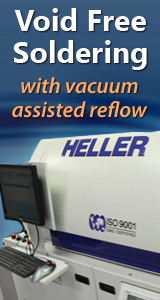Printed Circuit Board Assembly & PCB Design Forum
SMT electronics assembly manufacturing forum.
- SMTnet
- »
- Electronics Forum
- »
- qfp and soic joint Problem
qfp and soic joint Problem
![]() I am having a problem with some joints on a 100 pin pqfp an...
- Apr 11, 2000
by
I am having a problem with some joints on a 100 pin pqfp an...
- Apr 11, 2000
by
![]()
![]() Jeremy -
What's the process flow on these modules? Are...
- Apr 11, 2000
by
Jeremy -
What's the process flow on these modules? Are...
- Apr 11, 2000
by
![]()
![]() I�m thinking �Poor intermatallic� It could be a few things....
- Apr 11, 2000
by
CPI
I�m thinking �Poor intermatallic� It could be a few things....
- Apr 11, 2000
by
CPI
![]()
![]()
![]() Jeremy: Parts assembler make leads of either Alloy 42 (Inva...
- Apr 11, 2000
by
davef
Jeremy: Parts assembler make leads of either Alloy 42 (Inva...
- Apr 11, 2000
by
davef
![]()
![]()
![]() All of the above is good stuff.
To add, I have seen this s...
- Apr 17, 2000
by
Boca
All of the above is good stuff.
To add, I have seen this s...
- Apr 17, 2000
by
Boca
![]()
Jeremy Smith
- SMTnet
- »
- Electronics Forum
- »
- qfp and soic joint Problem







